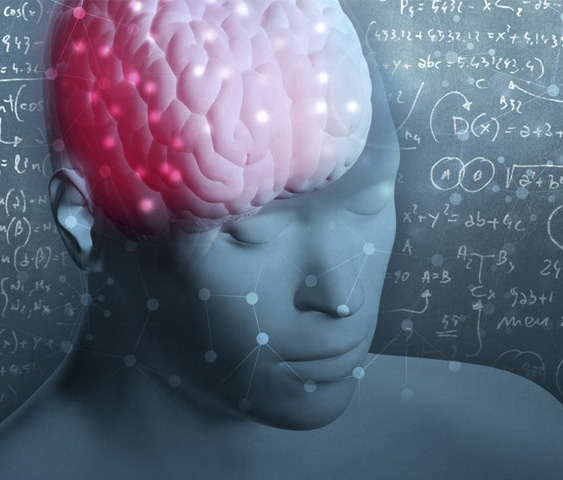Adding Up How the Brain Does Math Patterns Reveal Four Stages of Thinking That Can Be Used To Improve How Students Learn
Shilo ReaThursday, July 21, 2016Print this page.

A new Carnegie Mellon University neuroimaging study reveals the mental stages people go through as they solve challenging math problems.
In the study, which was published in Psychological Science, researchers combined two analytical strategies to use functional magnetic resonance imaging to identify patterns of brain activity that aligned with four distinct stages of problem-solving: encoding, planning, solving and responding.
"How students were solving these kinds of problems was a total mystery to us until we applied these techniques," said John Anderson, the R.K. Mellon University Professor of Psychology and Computer Science, and lead researcher on the study. "Now, when students are sitting there thinking hard, we can tell what they are thinking each second."
Anderson has revolutionized education and how students learn by developing a unified theory of cognition and using it to create successful cognitive-based tutors. He believes that insights from this new work may eventually be applied to the design of more effective classroom instruction — particularly in the form of improving cognitive tutors by creating models that match the brain activation and thinking patterns used to solve these problems.
Anderson’s work at the intersection of cognitive psychology and computer science to improve how students learn is a major reason that Carnegie Mellon has been a longtime leader in the study of the brain and behavior and in educational research. His legacy is a critical part of the foundation of two university-wide initiatives: BrainHub, which focuses on how the structure and activity of the brain give rise to complex behaviors; and the Simon Initiative, which aims to measurably improve student learning outcomes by harnessing a learning engineering ecosystem that has developed over several decades at CMU.
His latest study emerges from an ongoing line of research that uses brain imaging to understand the sequence of processes that underlie thinking. While neuroimaging research has provided a window into various aspects of cognition, how these pieces fit together into a coherent whole, as people complete tasks in real-time, is not clearly understood.
Anderson wondered whether two analytical approaches — multivoxel pattern analysis (MVPA) and hidden semi-Markov models (HSMM) — could be combined to shed light on the different stages of thinking. MVPA typically has been used to identify momentary patterns of activation; adding HSMM, Anderson hypothesized, would yield information about how these patterns play out over time.
Anderson and CMU Psychology Department colleagues Aryn A. Pike and Jon M. Fincham applied this combined approach to neuroimaging data collected from participants as they solved specific types of math problems. To gauge whether the stages identified mapped onto actual stages of thinking, they manipulated different features of the math problems. Some problems required more effort in coming up with an appropriate solution plan and others required more effort in executing the solution.
The aim was to test whether these manipulations had the specific effects one would expect on the durations of the different stages.
Eighty people participated in the study. After practicing using specific strategies to solve the math problems, the participants then answered a series of target problems while in the scanner. They received feedback for each problem, with answers turning green if they were correct and red if they were incorrect.
Using the HSMM-MVPA method to analyze the neuroimaging data, the team identified four stages of cognition: encoding, planning, solving and responding. The results showed that the planning stage tended to be longer when the problem required more planning, and the solution stage tended to be longer when the solution was more difficult to execute. This indicated that the method mapped onto real stages of cognition were differentially affected by various features of the problems.
"Typically, researchers have looked at the total time to complete a task as evidence of the stages involved in performing that task and how they are related," Anderson said. "The methods in this paper allow us to measure the stages directly."
Although the study focused specifically on mathematical problem-solving, the method holds promise for broader application, the researchers argue. Using the same method with brain imaging techniques that have greater temporal resolution, such as an electroencephalogram, could reveal even more detailed information about the various stages of cognitive processing.
The National Science Foundation and James S. McDonnell Foundation funded this research.
Shilo Rea | shilo@cmu.edu | 412-268-6094
